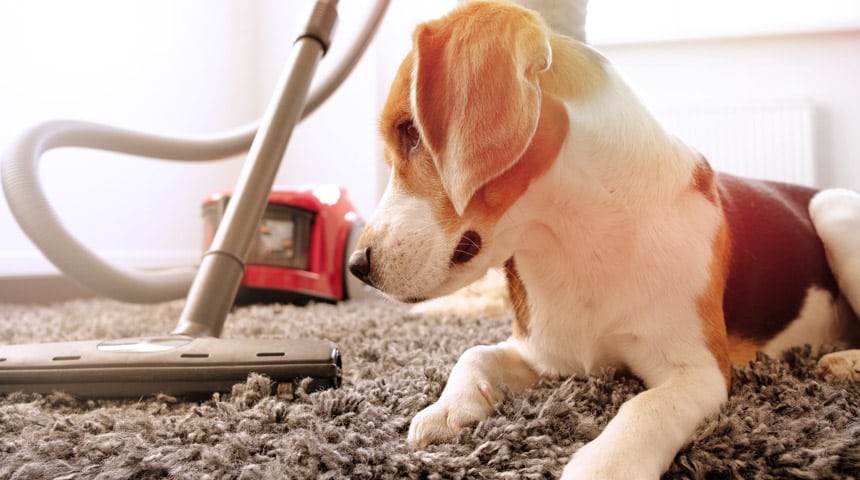
Fleas are wingless insects of about 1-4 mm. A flea lays approximately 300 to 400 eggs throughout its life, the equivalent of 30 eggs per day. Adult fleas are parasites that feed on blood and can cause injury and illness in your pets. Here are some tips for managing your dog as well as their environment when fleas are present:
Examine your Dog
Animals infested with fleas often present itchy skin lesions and areas of hair loss. Fleas’ favourite areas are the base of the tail, the abdomen and the inner thighs. Some dogs, however, have little or no lesions. Gently brush your dog with a fine-tooth comb to detect the presence of fleas or flea residue (small black grains; dried blood droppings). If you see these clinical signs, take your dog to your veterinarian for an examination.
Examine the Other Animals in your Home
Fleas move very easily between animals of all species. They jump from one animal to another or move around the environment in order to find a new host. Be on the lookout for clinical signs that may appear on your other animals.
Examine the Humans in your Home
Although they are not the preferred hosts of fleas, humans can sometimes be attacked. Bites occur on the ankles and legs of humans. Generally speaking, if you have pets in the home, fleas do not attack humans. Should your pets become infested, it is always a good idea to examine yourself.
The Key Periods
Fleas are not present outdoors all year-round in Quebec. In general, a seasonal peak in flea populations is observed towards the end of summer. Inspect your dog more closely during this key period to limit the introduction of fleas into your home and on your dog.
Medical Treatment
Consult your veterinarian to assess your dog's infestation and obtain medication for their treatment. Follow the treatment instructions carefully for it to be effective.
Keep Animals Clean
It is important that animals at risk of being contaminated be kept clean and in a clean environment.
Trim the Coat
This measure greatly reduces the number of fleas in your dog’s fur. This also allows for better assessment of lesions and administration of topical medications, if needed.
Environmental Management
An important part of managing a dog that has fleas is managing their environment. Thoroughly clean everything that comes in contact with your dog (brush, carpet, toys, bowls, etc.). The use of insecticides is generally not necessary if a medical treatment has been instituted by your veterinarian for your dog. Also, vacuum regularly to mechanically remove fleas and their droppings from the environment, and be sure to empty the vacuum or throw away the bag that contains the waste. As well, keep in mind that all fabrics are potential habitats for fleas, especially high-pile carpets (which even protect them from vacuuming). Walk around the house in white socks to detect the presence of fleas!

